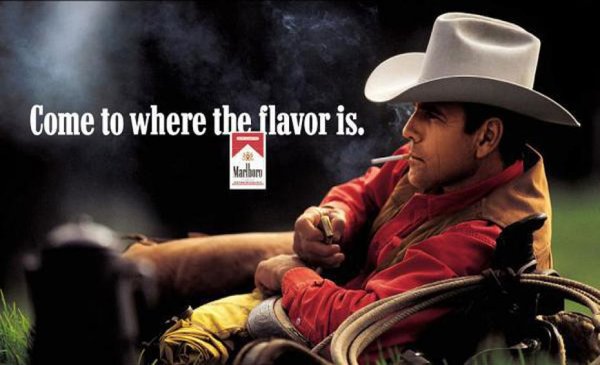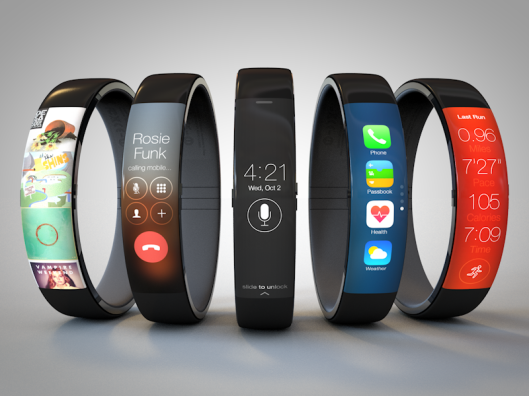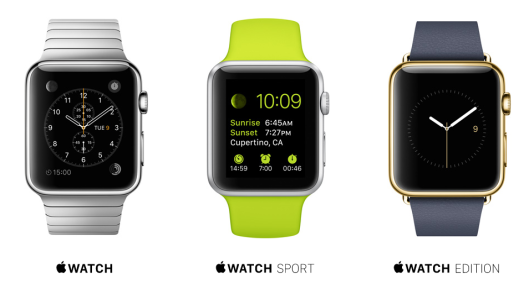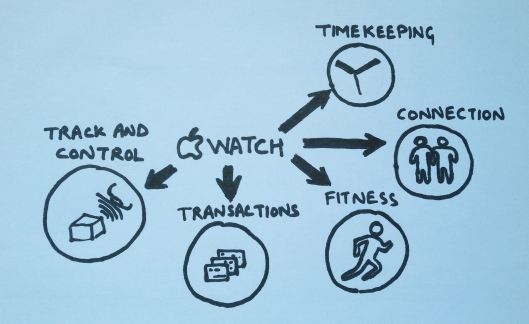On 6th March I conducted a workshop on ‘Understanding and Designing Business Models’ at The Coalition in New Delhi. In it, I explained Business Model Canvas, Lean Canvas and Value Web.
The audience belonged to fields as diverse as content creation, comedy, gaming, journalism, art and fashion, to name a few. To explain the concepts, I had to use examples which struck a chord with the audience. Below I discuss some of those along with the questions they were used to address:
*Can you pin point your target customer group? Are your customers clear about your unique value proposition? Are you leveraging your skills to create maximum value for your business?
Ustraa : Ustraa is a men’s grooming product range with the tagline – “Not tested on animals, only on rascals.” The name, Ustraa, is a Hindi slang for a razor blade used for a clean shaved face. Put together the tagline and the name, and you will get a clear sense of who the product is targeting – confident ‘somewhat hip’ urban male. They have done a terrific job at striking a chord with their target group. Seemingly that’s all they are doing, because their product development and manufacturing of its products is outsourced! And there is nothing wrong with such an approach. In any business, one should have a very clear sense of what value one is bringing to the table, and how one can leverage that to maximize value creation.
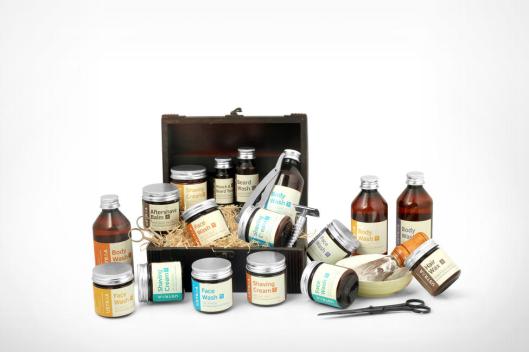
Mónica Lou Mercadé’s Dance Photography : Mónica is known for doing one thing better than anyone else in Barcelona – capturing dance through her camera. Over the years, she has honed her skills and has built connections with those involved in dancing (and she gets invited to all the events). This gives her unfair advantage in a certain area of photography. Can you think of a way to build unfair advantage in your business?
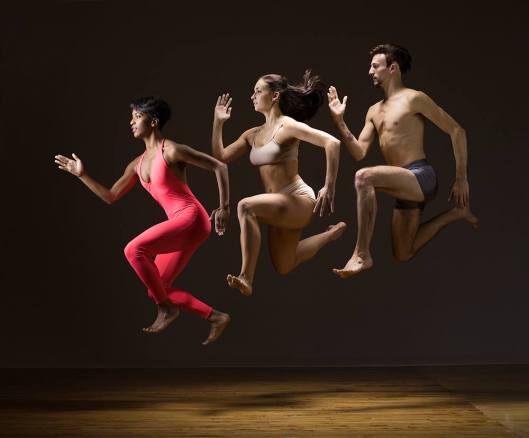
TaxiFabric : TaxiFabric is a platform which is allowing designers to showcase their talent by redoing the interior of Mumbai cabs (as of now). Cars are industrial products in the truest sense. There have been instances when while waiting at a traffic signal, I have seen same cars as mine on both sides. Everything about them is identical, except a few (hardly noticeable) accessorization here and there. But here’s one company which is trying to bring stories of a magnificent city inside its cabs. Perhaps tomorrow, the interiors of our cars will become a medium of self-expression for us.
*How are you nurturing your relationship with your customers?
The Viral Fever : The The Viral Fever is an online digital entertainment channel which has become extremely popular in the last 2-3 years. They started on Youtube, but they now have their own website and mobile app called TVFPlay. The most interesting thing I find about their company is the way they connect with their audience. The speak directly to them, and often tell about what were the dynamics behind the camera and who all participated. In fact in a panel discussion at The Coalition, TVF founder Arunabh Kumar told that the promotional material of their upcoming works may feature the faces of the writer, director and other crew, and not the cast! It’s fascinating to see how over time TVF has evolved its relationship with its audience. When people think about TVF, they don’t just think of it as an online digital entertainment channel but they think of it as Arunabh Kumar, Amit Golani, Biswapati Sarkar, Nidhi Bisht, Anandeshwar Dwivedi, Vaibhav Bundhoo, Jitendra Kumar, et al doing some cool stuff. Would you like to bring that kind of transition in the way your customers look at what you are doing?
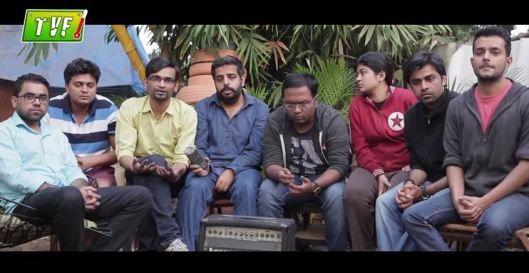
Fine Art Gallery De Twee Pauwen : Fine Art Gallery De Twee Pauwen is located on a posh street in the Hague and sells pricey artwork sourced from artists from all over Europe. To make sales, should they just depend on people walking in their store? Lucas, one of the two owners, has an interesting way to draw customers. Once in every 1-2 months, he invites his customers to have brunch with one of the exhibiting artists. During the brunch people get to understand so much more about the art-pieces of that artist and they start to see those in a different light. Of course, purchases happen too! But more importantly, by doing such activities, Fine Art Gallery De Twee Pauwen, has gone beyond just being an art gallery, to become a place where people come to nurture their interest in art.
Dark Side of the Lens (video) : Everything around us is the outcome of someone’s imagination and hard-work. The sofa on which I am sitting right now must have taken a few hours of a few people’s work to make. But only now as I write this piece, I became aware of it. People’s perception of value comes from the meaning they assign to a product/service. ‘Dark Side of the Lens’ is a beautiful short video where an underwater cameraperson talks about what his work means for his life, and how it is to be behind the camera.
*What is the best possible channel/platform to sell your product to your target customers? Can you think of some new and inventive ways, such as cross-selling?
Pop-up street food markets in London : The pop-up street food markets in London are amazing. I at least go three rounds of the market before deciding what to eat! These group of vendors put up their stalls in clusters in different areas on different days. It creates a fair like atmosphere – more people, more buzz, and more overall business for everyone! Ironical it may seem – sometimes when competitors cooperate/collaborate, they can get interesting results.
Chirodeep Chaudhuri (photographer) + Sandeep Mohan (filmmaker) : Chirodeep is doing a photo story on life in Mumbai cafes. Sandeep is making a short film on life of a few individuals who work from cafes. Does it not make sense for them to cross-sell when their works are finished?
Something Sketchy : Something Sketchy sells products like notebooks and coaster-magnets on a few e-commerce websites. It’s a side business of Madhuvanthi Mohan, who loves to travel and make illustrations. Having a small but consistent income from Something Sketchy has given Madhuvanthi the confidence to explore her passions in new ways. For over a year now, she has been travelling across India and has been funding her travels by painting murals wherever she goes.
Tesco Homeplus in South Korea : Tesco’s South Korean branch found out that a significant percentage of urban-living and hard-working South Koreans were finding the task of weekly grocery shopping to be a burden because they’re so busy at work, with family and in other activities. So they came up with the concept of bringing the store to the consumer! The company created virtual stores in subway stations in Seoul. Shoppers could walk up to the virtual store, choose the items they wanted to buy, and then scan the product QR code using their smart phone. Deliveries of the goods could be arranged to arrive within hours of the order!
Sandeep Mohan’s film ‘X’: In India, multiplexes like PVR cinemas off and on dedicate a few days to screen independent films. However, (silly) radicals often find something provoking in one of those films and the whole thing is made to shut. For his new film Sandeep didn’t want to go though the ordeal of first getting his movie selected for screening in a multiplex and then seeing everything abruptly coming to an end because of some intolerant folks. So he came up with the idea of taking his film to his audience! Once there is a demand for screening from a certain minimum number of people from a location, Sandeep travels there with equipments and screens the movie.
*Can you list down the underlying assumptions in your business idea? Can you think of ways to test those assumptions in the cheapest and fastest way?
Cardrops : Imagine there is a gadget which enables you to open your car trunk remotely so that you can get delivery from an e-commerce company. Great idea? But how do we decide how many people will in interested in buying something like that? How much will they be willing to pay? How frequently? How do we go about finding answers to those questions? This is what my friends at Cardrops did – without making any physical product they just made a website with description of the service and the pricing information. By promoting the website through different channels they started asking people, what price-service combination was interesting to them. Thus, by hardly spending anything they got valuable information from the field.
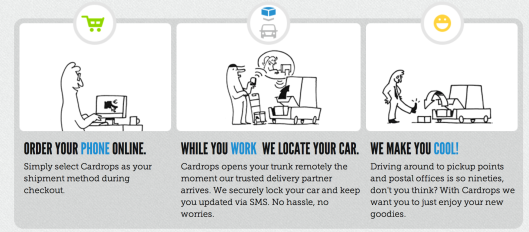
*What’s interesting in the things happening around you? Can you draw any inspiration from that and apply it to your current work? Try combining ideas from disparate domains to create new ones.
UrbanClap + Kickstarter : UrbanClap is platform for household services. Kickstarter is a crowd funding platform for projects. What if UrbanClap took inspiration from Kickstarter and allowed service providers on its platform to raise money from customers to take their service/business to the next level (for example, getting a better equipment), and in return provide discounts or some other benefits to those contributing money. Just like Kickstarter, the new version of UrbanClap can charge a small commission on the fund raised. We just created a new business model for UrbanClap by combining its business model with that of Kickstarter.
People who came to my workshop wanted to build business around what they liked doing. But interestingly, I found that most of them were too focussed on doing ‘the thing’ and had hardly ever given any thought to creating a business model around it. My advice to them was to start devoting 20-30% of their time to think about their business model and start operationalizing some of their ideas. It’s only by testing those ideas in the real world, they will be able to know which ones work and which don’t. Simple? Ain’t it?
To download the slide-deck that I used during my workshop: click here.
Do you have any interesting examples to share or any suggestion to make?


